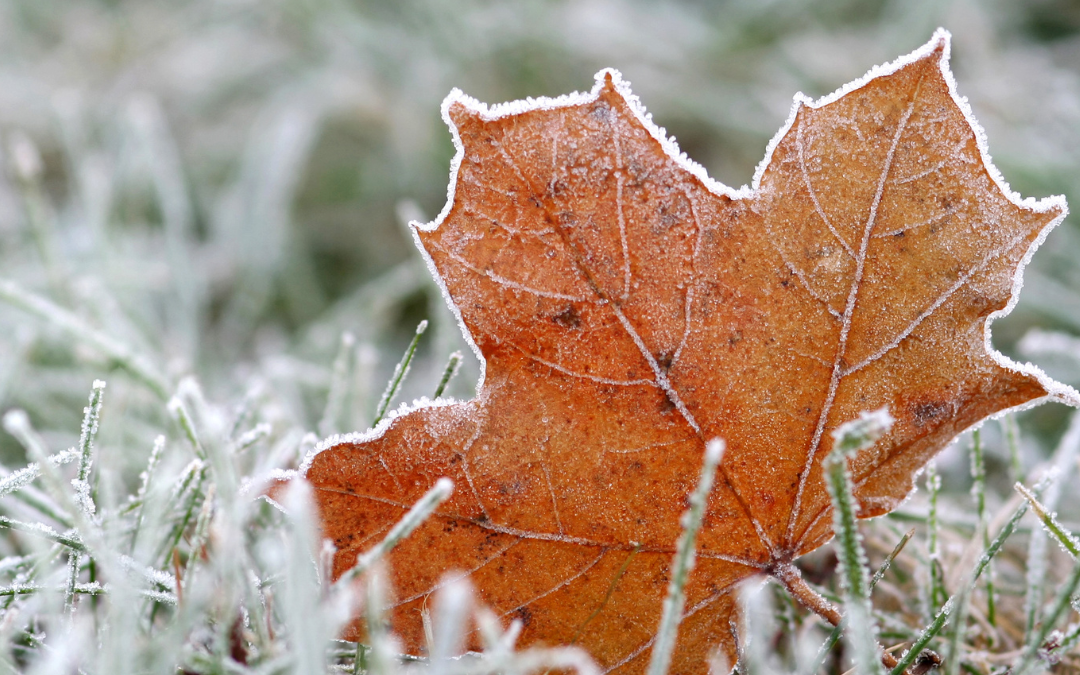
by Wildwood Outdoor Living | Nov 1, 2023 | Monthly Garden Tips
Welcome to November 2023, where the gardening season is slowly coming to an end. However, there’s still plenty you can do this month to prepare your garden for the upcoming year. Take a look at our helpful list of November gardening tips in this week’s blog post, and make the most of your time outside before freezing temperatures arrive!
-
Take care of fallen leaves and debris. Consider tidying up your garden by removing leaves and debris. This not only helps create a neat appearance but also promotes a healthier environment for your plants. You can choose to compost the leaves or use them for mulching, which benefits the soil and provides nourishment to your plants.
-
During winter, it can be beneficial to raise your pond pump onto a ledge within the pond. This way, it will only recirculate the top layer of water, which can prevent freezing and keep your pond healthy. Additionally, once all the leaves have fallen, make sure to remove any pond netting and take the time to clean the bottom of your pond for optimum maintenance.
-
Cover your compost piles as it helps in retaining vital nutrients that are essential for the decomposition process. By covering your compost piles, you create a protective layer that prevents the loss of valuable nutrients through evaporation and leaching. This compassionate act ensures that your composting efforts are optimized, resulting in nutrient-rich soil amendments that can nourish your plants and contribute to a healthier environment.
-
It is highly recommended to continue diligently and conscientiously removing weeds from your garden or landscaping as much as you possibly can.
-
Why not consider dividing your overgrown perennials and replanting them? If you don’t have enough space in your garden, they can also make a thoughtful Christmas present for a gardening friend.
-
Consider planting a variety of evergreens, perennials, and containerized fruit and shade trees. These beautiful plants will bring life and color to your space throughout the year, providing you with a vibrant and refreshing environment.
-
Gently trim the waterlilies, making sure to cut them two inches above the crown. This will help them thrive and create a beautiful display in your pond. Remember to carefully relocate them to a deeper area of the pond, providing them with the right conditions to grow and flourish.
-
Incorporate organic compost into your beds and borders as it can greatly enhance the health and vitality of your plants.
-
During the winter, it is essential to add a pond de-icer to maintain the good condition of your pond and add cold-water beneficial bacteria.
-
Take care of your perennials by giving them a little trim and clearing out the flower beds. By doing this, you are ensuring their health and preparing them for the winter season. Don’t worry, it’s a simple process that will help your plants thrive in the long run.
-
Keep mowing as long as the grass is growing! And maintain a clean lawn by removing leaves, toys and tool to keep it healthy.
-
Experience the joy of vibrant colors blooming in your garden by planting spring-flowering bulbs. Transform your outdoor space into a breathtaking display that will bring beauty and happiness to your surroundings. Now is the best time to take advantage of sales for the end of season!
-
Why not bring in some festive cheer by starting paper whites and other indoor forcing bulbs now? In just around seven weeks, they will burst into beautiful blooms, adding vibrant Christmas colors to your home.
-
Start seeds indoors during the month of November, taking into consideration the unique requirements of your specific region. This thoughtful approach ensures that your seeds have the best chance of thriving when they are eventually transplanted outside. By starting your seeds indoors, you provide them with a nurturing and controlled environment where they can establish strong roots and grow into healthy plants.
-
Gently prune back the lovely Rose of Sharon and P. G. hydrangeas to encourage their healthy growth and maintain their beauty. By carefully tending to these plants, you’ll help them thrive and bloom abundantly in the coming seasons.
-
Properly taking care of your gardening tools is essential, especially during the winter months. Here are some tips to help you clean and store your tools effectively:
a. Clean: Before storing your tools, make sure to remove any dirt, debris, or moisture from them. Use a brush or rag to wipe off any mud or soil. This helps prevent rust and prolongs the lifespan of your tools.
b. Sharpen: Take this opportunity to sharpen any blades on your gardening tools such as pruners or shears. Sharp blades make cutting easier and more efficient when you start using them again in the spring.
c. Lubricate: Applying a thin layer of lubricant, like oil or grease, helps protect metal parts from rusting during storage. Focus on hinges and moving parts that may be prone to corrosion.
d. Store in a dry place: Find a cool and dry area for storing your gardening tools throughout the winter season. Avoid damp areas as excess moisture can cause damage over time.
e. Hang or rack storage: To keep everything organized and readily accessible for next season, consider hanging or using a rack system to store your gardening tools vertically on walls or inside sheds. By following these winter tool maintenance tips with care and compassion for your garden equipment, you’ll ensure they stay in great shape until it’s time to get back out into the garden again!
-
Envision how you want your garden to look throughout the year. Map out which flowers will bloom when, which vegetables will be ready for harvest at different times, and how they will all come together in harmony. By planning ahead now, you’ll set yourself up for a successful gardening journey filled with beauty and abundance.
By wisely utilizing the gardening tasks and opportunities that November presents, you are demonstrating your commitment and dedication to nurturing your garden. This thoughtful approach sets the stage for a flourishing and vibrant garden when spring arrives. Embrace this wonderful opportunity to connect with nature, as you witness the breathtaking transformation that takes place when the dormant beauty of your garden comes alive once more. Your efforts in tending to your garden will surely yield fruitful results, bringing you joy and satisfaction. Wishing you a gratifying and fulfilling gardening experience!
Have a suggestion or question?
Let us know at info@wildwoodoutdoorliving.com.
Sign up here for more blogs dedicated to better gardening!
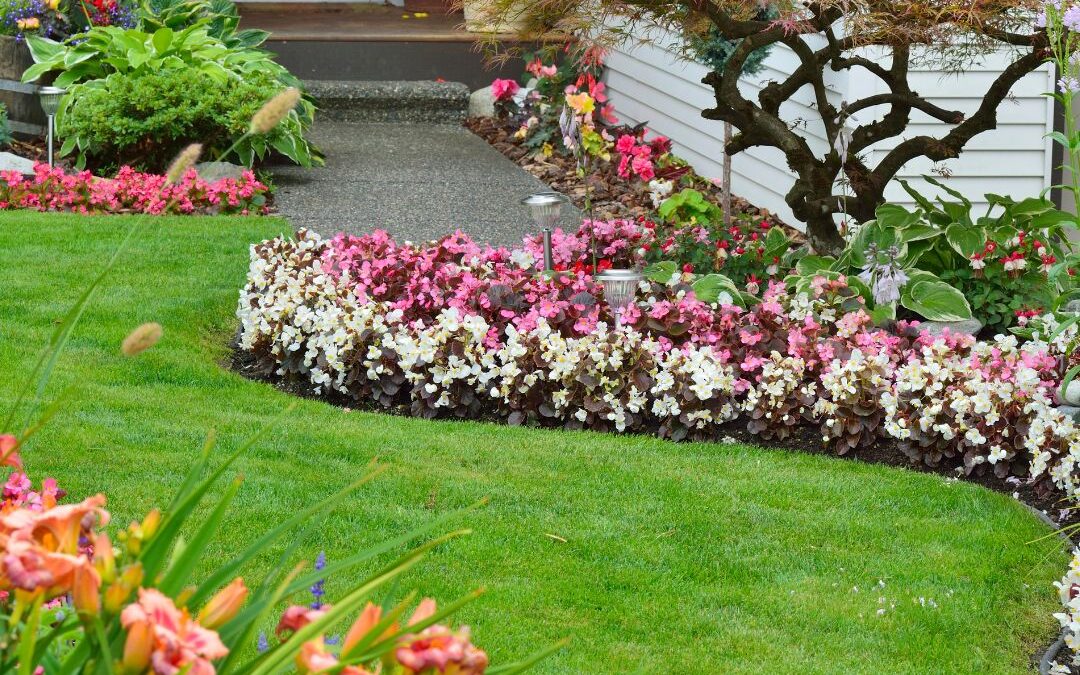
by Wildwood Outdoor Living | May 30, 2023 | Monthly Garden Tips
Summer is almost here and we are feeling the joy of blooms! We could do with a bit more warmth though, but it’s getting better day-by-day and that’s all that matters. It’s time to get the most out of your June garden, so grab your gardening tools and check off our handy list of to-do’s this month! Get growing and have some fun!
Plants

-
Plant early-maturing vegetables like Tomatoes, Beans, Peppers and Squash to get an early harvest.
-
Give your summer salads a flavor boost by planting herbs like basil and cilantro. Don’t forget to pinch off the flower buds to get more flavorful leaves.
-
Brighten up any garden by planting Cosmos, Marigolds, Zinnias, Nasturtiums, Morning Glory and Sunflowers.
-
To protect from insects and diseases, it’s important to pick up any fallen fruits or vegetables. This will help reduce their spread and ensure a healthy crop.
-
Plant cucumbers, edamame, different types of squash such as summer and winter, pumpkins, beets, carrots, chard, melons and scallions from seed is possible.
-
If you’re looking to begin planting winter crops, consider starting them indoors like Cabbage, Leeks, Chard, and Parsnips. This is a great way to ensure that they will be well taken care of and thrive come colder months.
-
Covering your sprawling vegetables, like melons and squash, with mulch will ensure they stay clean and dry by avoiding contact with dampened soil.
-
To ensure more blossoms come about in the next spring, prune Wisteria side shoots back to a length of 20 cm.
-
It is essential to remember to water containers regularly- once every two days, for instance. Window boxes, vessels suspended from the ceiling, and those located under overhangs and eaves may need to be watered daily.
-
After the spring-flowering shrubs have bloomed, it’s time to prune them to improve health and shape.
-
Keep container-grown trees and shrubs replenished with water, so they have the best chance to grow properly. It is important to keep these plants hydrated for them to continue thriving.
-
To ensure that perennials have a bushy, strong structure – it is advised to trim back their later flowering parts right away. This will give you an advantageous result in the long run.
-
Keep an eye out for black spot or powdery mildew on roses and other plants – treatment with some fungicide is essential. Don’t forget to remove and eliminate any infected foliage, as composting it can spread the disease.
-
Now is the time to get those summer-blooming dahlias, gladiolus, and canna lilies planted so you can enjoy their beautiful colors throughout the summer.
-
To ensure your strawberry fruit doesn’t touch the ground, be sure to put mulch around the base of your strawberry plants. This will provide a cushion and also prevent disease and pests from affecting them.
-
To make sure your roses stay healthy during the summer, remember to mulch them properly, feed regularily and prune off any dead flowers..
-
To ensure your vegetable plants receive the nutrients they require for optimal growth, use an All-purpose Fertilizer, 20-20-20.
Lawn & Pond

-
Now you can grow aquatic plants in your ponds and fountains. Planting water plants is a great way to add life to your pond and make it look more visually appealing.
-
Cool-season lawns only require minimal amounts of fertilizer during the summer months, as they go partially dormant when it is at its hottest.
-
As the temperature rises, it is a good idea to raise the blade height of your lawn mower. The trimmings left behind can serve as an organic and natural way to fertilize your grass.
-
Ensure that your lawn receives a minimum of one inch of water each week. To promote deep roots, thoroughly irrigate the area if you are utilizing watering systems.
-
It is recommended to wait until late spring when the temperature ranges between 20-23 degrees Celsius before introducing fish into your pond. This is the optimal time for them to thrive!
-
It’s the ideal time to plant and feed warm-season lawns, as the weather conditions now are just right.
-
If you want your fish to stay safe, limit their food intake to what they can finish within three minutes of waking up from hibernation. This way, you can be sure that they won’t choke on their meal.
-
Applying moss killer should be done when the temperatures are lower than 18C, as this is the ideal time for it to be effective.
-
We’ve added more water features to our collection! Decorate your outdoors with these stylish pond designs for a contemporary look.
Miscellaneous & More!

-
While applying slug bait, make sure to disperse it across your veggie garden – not in a single pile.
-
During the summer months, sprucing up houseplants and changing their environment can improve the overall appearance of your home and benefit your plants too.
-
Keep all the necessary items like gloves, labels, twine, plant food, pruners etc. in ready supply before commencing work. This will help you stay well prepared and avoid last minute hassle.
-
It is vital to change the hummingbird feeder nectar regularly, preferably every few days, as it can go bad quickly in hot conditions.
-
Investing in a rain barrel can be a great way to practice sustainability and save money! It’s an easy, effortless way to reduce your environmental impact as well as your expenses.
-
Give your compost heap a stir and add some water if it appears to be going dry.
-
To create a flourishing garden, it is recommended to install trellises for climbers such as clematis, tomatoes, cucumbers and pole beans.
-
Covering your berry bushes with netting can help keep birds from snacking on your delicious fruit and ruining your harvest. It’s an easy and effective way to protect what you’ve grown!
-
Ensure that birdbaths and water features are kept clean and fresh to inhibit mold and mosquito growth.
-
Make sure to get your fall bulbs now for a beautiful spring garden! Pre-ordering will guarantee you have all the blooms you want, right on time.
-
Supplementing the soil around heat or drought prone plants with extra mulch can help protect them from extreme conditions and provide much needed nutrition.
-
Make sure to check the compost regularly for readiness. If necessary, mix or replace with fresh compost as required.
-
Keep an eye on your plants for pests and diseases such as aphids, beetles, cabbage worms, hornworms and cutworms – and act accordingly if needed.
Have a suggestion or question?
Sign up here for more blogs dedicated to better gardening!
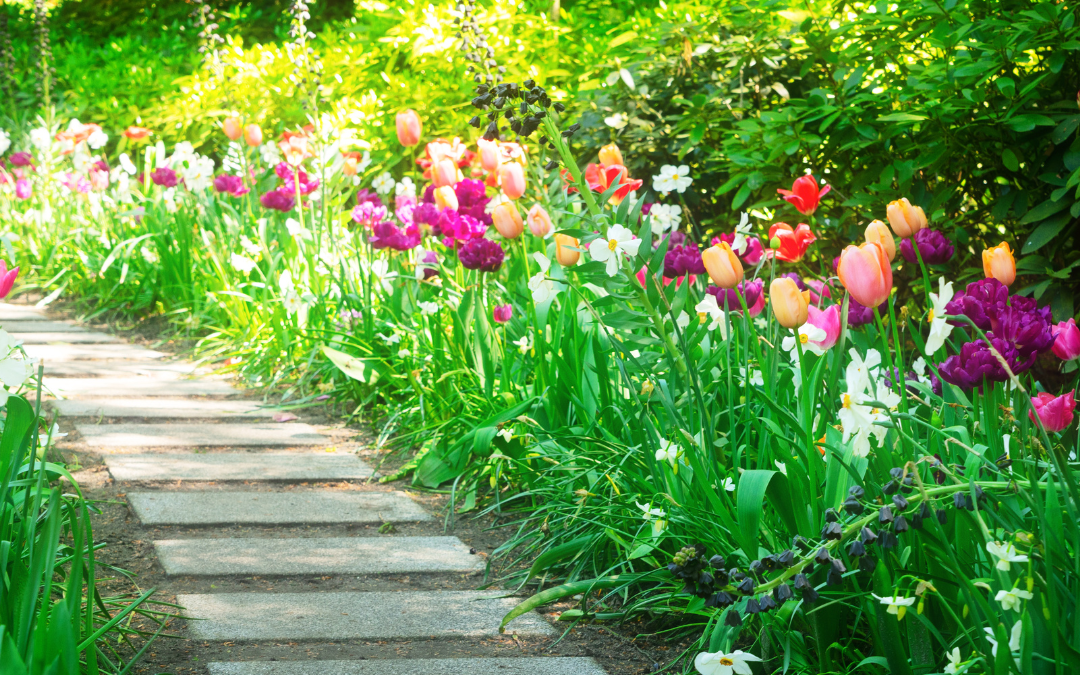
by Wildwood Outdoor Living | Apr 25, 2023 | Monthly Garden Tips
As the old saying goes, April showers bring May flowers – hoping that those blessed with snow showers can also enjoy the same luck! Even though the weather may not seem like it’s warming up, let’s focus on the actions we can take now so that when it does eventually get warmer, we’re ready to seize all the sunny days. If you want to achieve more with your May garden, we’ve got the solution for you! We’ve put together a handy list of activities that should keep you busy and bring out the best in your May garden!
Plants

-
Once the spring-flowering heather has finished blooming, it should be lightly pruned for an optimal result.
-
Make it a habit to routinely keep a lookout on your space for pests. Taking care of the pest-related problems at an early stage is much more effective in controlling them.
-
After flowering, deadhead spring flowering bulbs like tulips, daffodils and hyacinths to preserve their energy for next year.
-
Deadhead pansies and primrose after flowering.
-
Plant summer flowering bulbs such as dahlia, begonias, calla lilies, canna lilies, gladiolus and lilies in frost-free areas like containers, beds and borders.
-
Harvest cool-season vegetables; kale, cabbage, parsnip and spinach.
-
Plant warm-season vegetables/fruit; onions, cucumbers, tomatoes, raspberries, strawberries, blueberries, currants & more!
-
It is essential to maintain your vegetable garden consistently to ensure the soil is loose and oxygen circulation reaches the roots. This helps keep your plants healthy and vigorous.
-
Before you start planting, ensure that the weather has sufficiently heated up and remains this way before planting celosia, impatients, zinnias, fuchsias or heliotrope.
-
Following a proper fertilizing regime can help to prevent issues such as black spots and powdery mildew from affecting roses. This is critical for ensuring the health and longevity of these plants.
-
Winter is the ideal season to prune fruit trees and shrubs, but if you missed the opportunity, now is still a great time to get it done. Make sure you take care of your trees before new growth starts appearing.
Pond, Lawn & Birds

-
Begin providing food for your fish once the temperature has exceeded 5-8 degrees. Additionally, it’s crucial to only give them an amount that can be consumed in a span of five minutes.
-
May is the perfect time to lay down new lawns, as the weather conditions are ideal for successful sowing.
-
Give your lawn the best start by using seed and sod starters. These will provide the foundation needed to get a lush, green lawn quickly and easily.
-
In order to promote healthy growth and blooms, start to fertilize water lilies and lotuses regularly.
-
As soon as the weather gets warmer, make sure to fill birdbaths. Filling birdbaths is an easy and inexpensive way to bring nature into your home, making it an ideal solution for everyone who enjoys watching wildlife.
Miscellaneous & More!

-
Make sure to check out the wide selection of flowering plants available. Grab your favourite blooms and don’t forget the fertilizer; it is essential for feeding them every 10 days if you want a beautiful summer full of bright blooms.
-
As the temperatures increase, it is important to watch out for rapid growth and spread of weeds. Be vigilant in keeping this in check.
-
Frequently mix your compost and check if it’s finished. If it is, you can apply it to your garden right away.
-
Mulching is a great way to conserve moisture and keep weeds at bay during the summer months. All you need is grass clippings, bark, pine needles, straw etc. to mulch your garden or flower beds. Plus, it’s an easy and cost-effective solution!
-
It is recommended to shear the spring-flowering heather lightly once it has completed flowering.
-
Take the time this Spring to review your garden tools and decide which ones you should keep and which should be replaced. If they are in good condition, it may be a good idea to sharpen them as well. Doing this now will ensure they will last through another gardening season.
-
It’s important to take a look at your patio and see if any maintenance is required. Inspect the condition of the area and if necessary, take action to ensure it is in its best condition.
Looking for more to do? Check out this episode of Get Up and Grow with our president, Gord Nickel to learn how to grow your own Kiwi’s below!
Have a suggestion or question?
Sign up here for more blogs dedicated to better gardening!
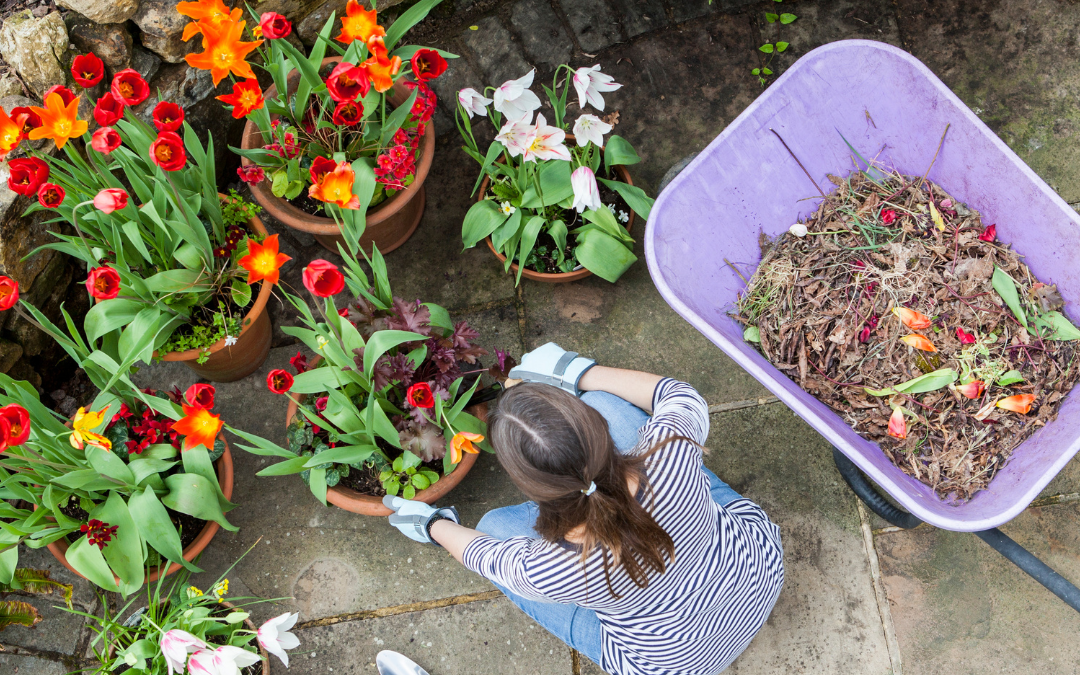
by Wildwood Outdoor Living | Mar 29, 2023 | Monthly Garden Tips
Spring is the ideal time to get outside and enjoy the fresh air while tending to your garden. With April just around the corner, we thought it would be the perfect time to help keep you busy as a bee so that you can grow your best garden yet. Get your notebook and pencil ready, because it’s time for a little spring-cleaning!
Container Gardens
Transform your outdoor area with the beauty of container planting. You don’t need a full-fledged garden anymore to enjoy vibrant, lush blooms – just some containers on your patio or porch will do the trick!

 |
Springtime is a great time to prune shrubby plants with hardy stems, as they only produce flowers on fresh shoots. Regular trimming will keep them in good health and boost their blooms.
|
 |
Try planting Violas as a great cool-temperature loving bloom (Tip: check out Viola Rose Antique Gem for a unique display.)
|
 |
To ensure full planters, it is best to switch out the top 5 cm of soil with some new soil or start from scratch.
|
 |
To kick-start the growing season, transplant seedlings into containers and keep them indoors until all danger of frost has passed.
|
 |
Planting bulbs in containers is a great way to add a pop of color and life to your outdoor space. Bulbs are easy to plant, require minimal effort, and will reward you with beautiful summer blooms. Some of our most popular varieties right now are Ranunculus, Anemone, Peony, Calla Lily, Canna Lily, Asiatic Lily, Dahlias, Begonias, Crocosmia.
|
Tip: With a three-tier plant stand, you can easily organize your garden and keep all of your plants in one place. This is great if you have a lot of plants and need to find them quickly!
Clean up
Spring is the best time to begin your compost pile and you can use your last year’s pile for flipping. Most of the kitchen waste which you clean up can be put in it. However, make sure to discard any plant material with symptoms of disease and any weeds or seed heads that might pose a problem. Be sure to keep this in mind while cleaning up dead plants, weeds and trimmings.

 |
It is absolutely essential to assess the condition of your soil before making amendments. Gauging the pH levels (alkaline, neutral or acidic) will help you evaluate how well balanced the nutrients are.
|
 |
To prevent weeds from taking over your garden, now is the time to take action by manually weeding them out. The soil should be damp, as this will make it simpler to pull out the young seedlings. Avoid composting your weeds if possible, as you may regret doing so later on due to their resilience.
|
 |
Don’t wait for new growth to start before pruning back your ornamental grasses. Cut them close to the ground and they will regrow when they are ready.
|
 |
Winter debris needs to be cleared out of flower beds, as this can help disturb slugs that have been overwintering in the area.
|
 |
To enhance the drainage of soils with heavy clay content, it is recommended to incorporate plenty of compost into the soil. This will help optimize water absorption and drainage in areas that struggle with these issues.
|
 |
Always inspect your plants for any signs of pests and diseases, as this can help prevent serious damage to your crops. Catching the issue early on can make the process of handling it much simpler than trying to fix it after it’s already caused havoc.
|
Tip: Don’t put off tidying up your garden for too long. Pruning your plants before the new growth starts to become intertwined with the old makes it much easier and hassle-free.
Planting
There’s nothing better than getting all your chores caught up so that you can start your 2023 garden from fresh prepared soil. If you’re ready to plan and prepare your plants, there is so much fun to be had. Let the 2023 planting season begin!

 |
This season, why not try something new? With our selection of the newest seeds, plants and bulbs, you can create a unique look that will be sure to take your garden to the next level. New seeds, New bulbs & New vines. |
 |
Spring is the time of renewal, and with the frost over, it’s the perfect time to get started with perennial planting. Whether you’re looking for a low-maintenance garden or want to create a vibrant colorful display, perennials are hardy and long-lasting giving you years of enjoyment. Tip: Try dividing last year’s perennials before shopping for new ones.
|
 |
Before planting, powder your potatoes in Sulphur to prevent disease. |
 |
Transplant Lettuce, Peas, Radishes, Carrots, Cabbage, Broccoli, Beets, Spinach. |
 |
Now that the days are getting longer and warmer, it’s a perfect time to make sure your houseplants are getting the water and attention they need. It’s also an ideal opportunity to transplant them into larger pots.
|
Tip: Start feeding the garden with Nurseryland Vegetable, Flower & Garden 12-16-12.
Have a suggestion or question?
Let us know at info@wildwoodoutdoorliving.com
Sign up
here for more blogs dedicated to better gardening!
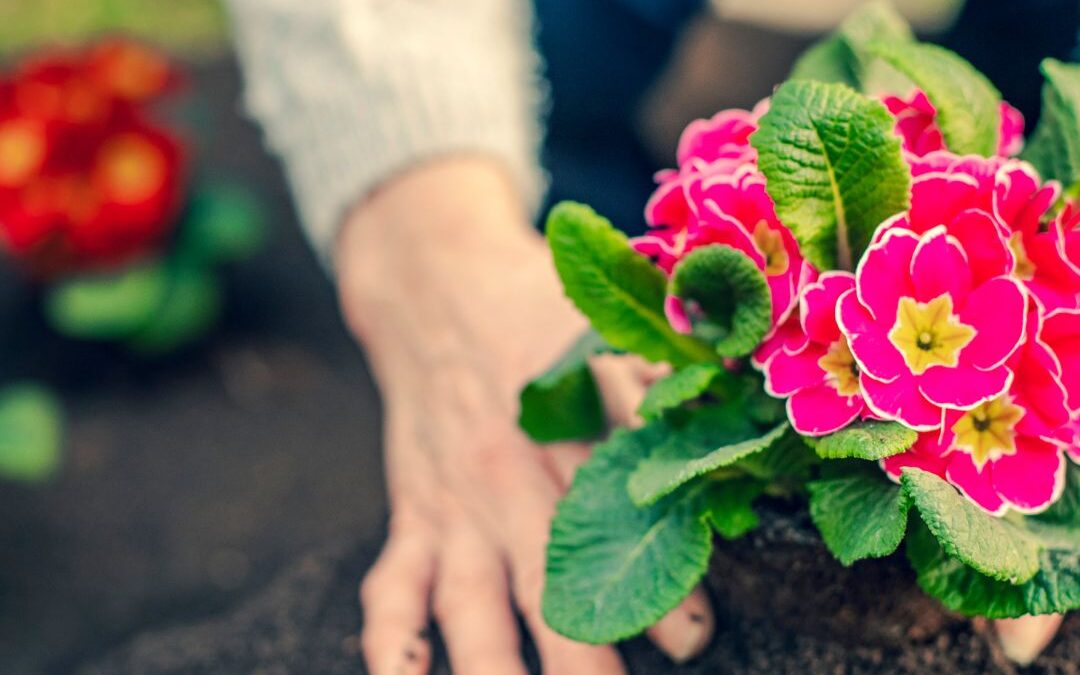
by Wildwood Outdoor Living | Feb 22, 2023 | Monthly Garden Tips
With the arrival of spring, it is time to get your garden ready for the new season. March is a great month to started on some of your favourite gardening activities! Plus, don’t forget it’s the best time of year to get everything you need while shelves are fully-stocked. In this weeks blog, we’re here to share everything you can do this March, so that you can grow your best garden yet this Spring!
March Checklist

Still have snow on the ground? That’s no problem at all! With March comes a lot of preparation for a whole new season ahead. Whether you’re cooped up indoors or just about ready to dig in the dirt, we’re here to make sure you cross off everything there is to do this month with our handy check-list below.
 Feed houseplants with garden prod Palm & Tropical Fertilizer, 9-3-3 and repot houseplants for optimal growth. Feed houseplants with garden prod Palm & Tropical Fertilizer, 9-3-3 and repot houseplants for optimal growth. |
 Plan out your garden to make sure the growing conditions for all your plants are met. Consider growing vertical gardens for extra space and privacy! Plan out your garden to make sure the growing conditions for all your plants are met. Consider growing vertical gardens for extra space and privacy! |
 Try building raised beds in your vegetable garden this year, drainage is much improved and the soil temperature is 8-13F or higher. Try building raised beds in your vegetable garden this year, drainage is much improved and the soil temperature is 8-13F or higher. |
 Build up your soil with bone meal, manure, or with your own garden compost. Build up your soil with bone meal, manure, or with your own garden compost. |
 Feed established outdoor plants with Nurseryland All purpose 20-20-20 plant food. Feed established outdoor plants with Nurseryland All purpose 20-20-20 plant food. |
 If and when your grass is dry, mow at a high setting. If and when your grass is dry, mow at a high setting. |
 Prune mophead hydrangeas by cutting off last years flowering stems. Prune mophead hydrangeas by cutting off last years flowering stems. |
 Arrange plant support when the ground becomes warm enough. Arrange plant support when the ground becomes warm enough. |
 Watch for arrival of fresh and new nursery stock. We’re starting to get more and more each day! Watch for arrival of fresh and new nursery stock. We’re starting to get more and more each day! |
 Check for drainage! Walk your lawn to see where water has collected and make repairs as needed. Check for drainage! Walk your lawn to see where water has collected and make repairs as needed. |
 Do a clean-up rose pruning now. Do a clean-up rose pruning now. |
 Start Tuberous Begonias inside now, transport outdoors when the soil is workable. Start Tuberous Begonias inside now, transport outdoors when the soil is workable. |
 Try installing a rain-water system, to save money on watering this year! Try installing a rain-water system, to save money on watering this year! |
 Try planting popular varieties of Spring Bulbs Lilies, Dahlias, Anemones, Canna, Calla, Ranunculus, Begonias, Anemone & More! Try planting popular varieties of Spring Bulbs Lilies, Dahlias, Anemones, Canna, Calla, Ranunculus, Begonias, Anemone & More! |
 Prune trees and shrubs, from any winter damage. Repair broken branches with clean cuts to prevent mites. Prune trees and shrubs, from any winter damage. Repair broken branches with clean cuts to prevent mites. |
 Try using recycled plastic for sowing seeds, like yogurt cups! Try using recycled plastic for sowing seeds, like yogurt cups! |
Sowing In March

March is the perfect time to sow seeds for your garden. Whether you are a novice or an experienced gardener, sowing seeds in March can help you get a head start on the growing season. There are many benefits to sowing seeds in this month, including taking advantage of the early spring weather conditions and avoiding pests and diseases. Additionally, March is a great time to test out new varieties of plants and experiment with different planting techniques. Check out our handy list of seeds that are ready for sowing this Spring!
| South Coastal, BC |
Broccoli, Sage, Mint, Cabbage, Rosemary, Sweet Pea, Tomato, Viola |
| Interior, BC |
Pepper, Onion, Tomato, Artichoke, Pea, BroadBean, Oregano, Marjoram, Dianthus, Agastache |
| Canadian Prairies |
Leek, Onion, Pepper, Artichoke, Pea, Oregano, Thyme, Lemongrass, Digitalis, Lavender |
| Southern Ontario |
Asparagus, Arugula, Pea, Sesame, Lettuce, Parsley, Catnip, Mint, Bergamot, Digitalis |
| Southern Quebec |
Lavender, Rosemary, Sage, Mint, Nigella, Viola, Sweet Pea, Claytonia, Onion, Pepper |
| Maritimes |
Thyme, Oregano, Catnip, Alyssum, Digitalis, Sweet Pea, Leek, Onion, Broad Bean, Artichoke |
| Northern Canadian Regions |
Artichoke, Leek, Onion, Oregano, Rosemary, Mint, Sage, Digitalis, Viola, Columbine |
Have a suggestion or question?
Let us know at info@wildwoodoutdoorliving.com
Sign up
here for more blogs dedicated to better gardening!
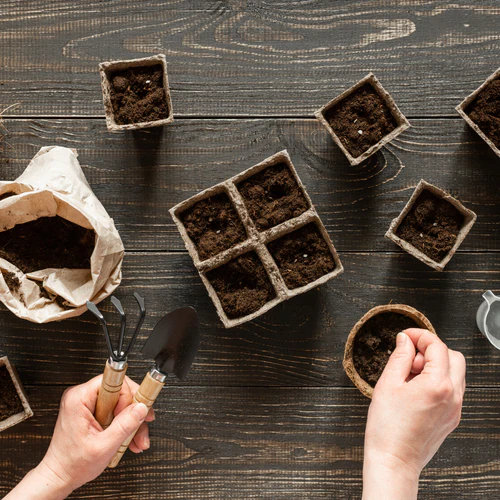
by Wildwood Outdoor Living | Feb 5, 2023 | Monthly Garden Tips
February is a great time to get your garden ready for spring. Whether you’re an experienced gardener or just getting started, there are plenty of activities you can do in February to make sure your garden is ready for the warmer months ahead. From seed sowing and garden planning to caring for houseplants, February gardening offers something for everyone. With the right preparation, you can enjoy a beautiful and productive garden all year round!
Seeds

With temperatures slowly increasing and the days getting longer, February is a good month to start planting your first seeds of the year. Depending on which zone you live in, there are a variety of crops that can be planted in February. In Zone 3, for example, you can sow lettuce, spinach, kale and carrots. In Zone 4, you can sow onions and peas. And in Zone 5 you can sow tomatoes and peppers. No matter what zone you live in, sowing seeds in February will give your garden a head start on the growing season! Check out a few popular varieties of seeds you can sow now in your area – below!
 |
Coastal, BC – Asparagus, Broadbean, Corn salad, Onions, Pac Choi & Choi Sum, Peas, Radish, Spinach, Strawberries |
 |
South Central, BC – Artichoke, Asparagus, Celery, Chickpeas, Strawberries |
 |
Ontario, BC – Northern BC, Artichoke, Strawberries |
 |
South Central, Prairies – Delphinium, Rubeckia, Snapdragons, Sweet Pea, Yarrow, Pansy, Lavender, Rosemary |
 |
Southern Prairies – Artichoke, Asparagus, Celery, Leeks, Onions, Peppers, Strawberries |
 |
Northern Prairies – Tithhonia, Viola, Lavender, Rosemary |
 |
Central Ontario – Asparagus, Cress, Leeks, Onions, Peppers, Strawberries |
 |
Southern Ontario – Arugula, Asparagus, Leeks, Onions (storage), Peppers, Strawberries |
Planning

February is the perfect time to plan your garden for the upcoming growing season. With a little bit of planning and preparation, you can have a beautiful garden that will bring you joy all spring and summer long.
 |
Mapping out your garden is the first step in planning for February. You’ll want to decide which plants will go where, and how much space each one needs. You’ll also want to consider bloom times, so that you can maximize color in your garden throughout the season.
|
 |
Take stock of what you currently have in your garden. What are the plants that need to be moved, weeds that need to be pulled, and areas that could use additional garden space?
|
 |
Plan for which plants will grow well in the month of February and factor in any bloom times. Are there flowers or vegetables you would like to plant earlier than usual?
|
 |
Finally, don’t forget about containers! If you’re short on space or just looking for more room for plants, using containers can be a great way to add more garden space without taking up too much room in your yard. With a little bit of creativity and planning, you can make sure your February garden planning sets up your outdoor oasis for success all season long!
|
& More!
Looking for more to do in the garden this February? Check out the latest episode of Get Up and Grow, ‘Brighten up your winter garden’ with our President, Gord Nickel – below!
Have a suggestion or question?
Let us know at info@wildwoodoutdoorliving.com.
Sign up here for more blogs dedicated to better gardening!




















